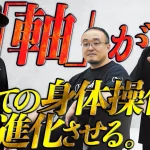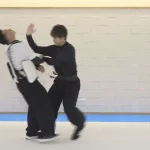Translating Jujutsu Manuals: A Look Inside Meiji Era Budo
text by Eric Shahan
Last year I published a book called A Collection of Curious Jujutsu Manuals. The book was an anthology of Jujutsu manuals published in the late Edo and early Meiji Eras. My goal was to translate some of the many books on martial arts that former martial arts instructors sold to promote their art which had heretofore been supported by the government. For the most part the books extolled the virtues of Jujutsu training and then introduced some techniques from various Koryu, old school techniques. the types of books available to the average citizen of Japan and that consisted of five short Jujutsu manuals

Cover of A Collection of Curious Jujutsu Manuals published in 2018
|
The 5 Books included in A Collection of Curious Jujutsu Manuals: |
||
|
Edo Era circa18th-19th century |
1892 |
|
 |
 |
|
|
1895 |
1907 |
Edo Era circa18th-19th century |
 |
 |
 |
I am currently working on Volume 2 of this series and would like to introduce one of the books included in this anthology and talk about how the translation is done.
The Japanese title is:
兵法要務:柔術剣棒図解秘訣Heihoyomu: Jujutsu Kenbo Zukai Hiketsu
In English this (rather long title) Fundamentals of Military Strategy: An Illustrated Guide to the Secrets of Jujutsu, Kenjutsu and Bojutsu and it was published in 1887, almost two decades after the Meiji Restoration and the end of the Samurai. The author is Inoguchi Matsunosuke井口松之助 who wrote several books about martial arts. This makes it likely he was from a Samurai family that served as martial arts instructors for one of the former domains of Japan. He was likely a practitioner of Tenjin Shinyō Ryū Jūjutsu 天神真楊流柔術since the Jujutsu techniques in this book are from that school, though he doesn’t mention that specifically. This book was an attempt to make the transition from an employee of the government to a citizen earning a living selling martial arts instruction.
The first several chapters deal with martial arts strategy and the book covers other martial arts including sword fighting, Rokushaku-bo (180-centimeter staff) and Hanbo (90-centimeter staff.) However, I am only focusing on the Jujutsu techniques presented in this book. As far as I can determine this is the oldest post-Meiji Restoration (1868) illustrated book on Jujutsu. Illustrated Jujutsu manuals existed before this time, but they were made for practitioners of a certain school and were probably not made for public consumption like this one was.
Due to the length, complexity and difficult Japanese in this book only the first two sections, Tehodoki and Shodan of Jujutsu will be translated. I hope to include the next two sections in volume 3 and translate the whole book at some point soon.
The book also went through over a dozen printings, each time adding and correcting some sections. I used a combination of three editions due to some missing pages. The author alternates between a person’s right or left and the viewer’s right or left which can be quite confusing. I have done my best to visualize these techniques and correct all such instances to the person’s right and left, not the viewers. The biggest issue was in the description of the techniques. Transitions from one movement to the next were rather unclear in some cases. To solve this, I consulted two other books associated with this school. These sources were published in the years after Jujutsu Kenbo Zukai Hiketsu. They are Illustrated Guide to the Inner Mysteries of Tenjin Shinyo School Jujutsu (1893) and Tenshin School Jujutsu (1926.) Both books contain the same list of techniques from Jujutsu Kenbo Zukai Hiketsu, therefore, for clarity, I combined the explanations from the three books into each technique.
 |
|
Illustration at the front of the section on Jujutsu depicting a typical Dojo set-up in the Early Meiji Era. The Sensei is seated on a raised platform with a charcoal brazier beside him. The calligraphy above him reads 柔制剛 The soft and flexible can topple the strong and rigid. |

Kenbo Zukai introduces Jujutsu in the following way:
The Origin and Significance of Jujutsu
Since long in the past Samurai have trained in Jujutsu. Whether in peacetime or in war it was considered a fundamental art. What I am describing is the art where the soft and flexible conquers the strong and rigid. Even if you are facing an opponent who is much stronger, you can easily seize and break them. Jujutsu is an art that allows you to consistently achieve victory. The reason is, there is a limit to strength, but technique has no limits. It grants you the power to take life or give it.
If you become enlightened to the Okugi, inner mysteries, of Jujutsu then you will be able to both topple your enemies and revive those that have been attacked or had an accident. Thus, I beseech the average citizen to study the art of Jujutsu. Some of the more renowned schools are the Yoshin School, the Shinto School, the Tenshin Shinyo School and the Kito School. The way these schools teach Jujutsu is largely the same, varying only in the details however the inner meaning is the same.

.jpg)
Chapters on Jujutsu
- 12 Shikumi Tehodoki, or Freeing Seized Hands techniques.
- 10 Shodan Idori, or First Level Responding to a Sanding Attack Techniques.
- 10 Shodan Tachi-ai, or First Level Responding to Armed and Unarmed Attacks
- 20 Shodan Nagesute, or First Level Sacrifice Throw techniques.
- 12 Randori, Free Sparring techniques
There are many Kuden, oral transmissions, and Hiketsu, deep secrets, in these techniques so, illustrations can’t do them justice. Therefore, only the Mokuroku level of Jujutsu training is listed.
Notes: Mokuroku is a set of basic techniques or it can be the first level of techniques.
The 12 Randori, Free Sparring Techniques listed in the table of contents under Jujutsu, aren’t mentioned in this introduction.
振解 Furi-hotoki: Shake Free

振解 Furi-hotoki: Shake free It is the second technique of the Tehodoki Section.
Note: Many martial artists are familiar with the two roles Uke and Tori, the receiver of the technique and the one doing the technique. In this school the Uke is called the Koh and the Tori is the Otsu. 甲乙Koh-Otsu can be translated as Former and Latter and is also used in Kyudo, Japanese Archery, to indicate a pair of arrows. One arrow is fletched with the feathers of from a bird’s right wing and one from the left wing, so they rotate in opposite directions when shot.
For simplicity’s sake Koh will be “The Attacker” and Otsu will be “You.” This is somewhat of an imperfect system since sometimes you attack “The Attacker” first, like in this technique.
|
Illustration 1 |
Illustration 2 |
 |
 |
|
Yahazu |
A page from a Japanese Archery Document that diagrams names of the parts of the arrow. The Yahazu, or nock, is circled. |
 |
 |
This technique is a continuation of the previous technique, Devil’s Fist.
Strike down to Men (top of the head) with the hand you yanked free in the previous technique. Your hand should be in a Shuto, or Hand Sword. This is also known as Hira Shuto, or Flat Hand Sword.
Note: Translating words like this is difficult since there is no reading given. For example, the Kanji for this could also be read as Te-Gatana.
As the illustration shows, you pick your target on the Attacker’s head and with a Kakegoe of Ei-ya! strike the Attacker in the head. The attacker matches your Kiai with one of his own and catches your wrist. He has his hand shaped like a Yahazu, the nock of an arrow. See the separate illustration of how your hand should look.
Note: The words Kiai and Kake-goe are interchangeable. The purpose of this shout is to unify your physical actions with your intent, while at the same time disrupting your opponent’s spirit and hopefully causing them to lose focus.
To free your right hand from the Attacker’s grip, use a cry of Eih! And cut your hand downward, toward the Attacker’s right knee. This is shown in illustration 2.
Note: The Kake-goe used in this document vary a lot. Eih! Ei-ya! Yaa! and Ya-to! are all used.
The left and right sides are done the same way. When attacking with the Shuto, envision yourself striking down with enough power to snap the bone at the base of the thumb.














